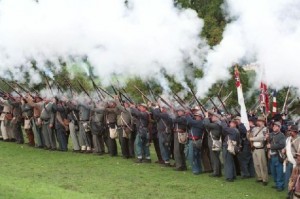This might be the first time that I’ve written an RCL draft post where I’ve felt confident in my assignment topic’s direction. Usually, I end up discussing a few potential ideas in broad strokes, but in this entry, I hope to give a more robust, thorough outline of the arguments in my issues brief.
Topic: Mandatory Minimum Sentencing
I’ve always been fascinated by civil rights and social justice/advocacy movements. In 11th grade, I wrote a research paper about Emmett Till and his lynching’s impact on the Civil Rights Movement, and last semester, my paradigm shift paper analyzed the role of social media in addressing police brutality. So after watching 13th in class last week, settling on mandatory minimums seemed to strongly align with my interests.
Paper Purpose/Main Idea – At this point, my paper’s main focus is still up in the air. However, there are two points that I know I want to convey in my brief:
- Mandatory minimum sentencing has severely harmed communities of color by fostering distrust between themselves and authority figures, and by stripping them of equal treatment under the law.
- Mandatory minimums have exacerbated the current conditions of the prison industrial complex, and must be redacted from U.S. law.
Outline
Historical Context – I want to introduce my topic by contextualizing current criminal/prison legislation within the events that have taken place since the 50s, including:
- Propaganda, Media Efforts of 1950s
- Nixon’s War of Drugs
- “Cracking Down on Criminality”
Issues – There are clear ethical, judicial, and political problems with mandatory minimums. Below are some points of emphasis that I would like to discuss in my issue brief:
- Unethical Ties to Corporate Interests
- Criminalization of Black Communities
- Failure to “Fit the Punishment” (mismatch between severity of crime and severity of punishment)
Plans of Action – The issues of mandatory minimum sentencing cannot be solved with one new law or initiative. Rather, it must tackled with a holistic, multi-dimensional policy approach. Here are some of my ideas:
- Abolishing Mandatory Minimums
- Reducing Recidivism Through Community Programs
- Eliminating “Criminal Labor” through Legislation
- Returning Authority to Judges
